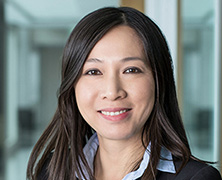Increasing Diversity in STEM
As a Chinese-American who grew up in San Francisco, I have always been inspired by role models who looked like me and had a similar background. Seeing their barrier-breaking successes in the face of adversity gave me confidence that I could make similar strides.
One important way to grow diversity in STEM is for children, students, and young professionals to see that there are leaders who look like them and share their socio-economic background. It is important that these role models are not only more visible, but also that they actively participate in outreach and mentorship opportunities in their communities.
Barriers to Progress for Women in STEM
Despite progress, there is still a tendency to encourage young boys towards STEM fields, while young girls are less encouraged. This barrier to closing the gender gap is evident even at a very young age. I see it even in the toys that are advertised or suggested for my preschool-aged daughter—robots and trains for boys, dolls and kitchen sets for girls.
Another important barrier is the unbalanced domestic responsibility placed on working mothers. Many women have difficulty continuing in their STEM career once they have children. There should be more support for working mothers, as well as less antiquated attitudes regarding the roles of both working mothers and fathers, so that fewer women will feel pressured to leave their STEM careers.
How the World is Changing with Regard to STEM
The pandemic has highlighted many needs in society that will require advances in STEM. The ongoing need for new vaccines and biotechnologies for COVID-19 and future threats calls for advances in biotechnology, health care, and technology. The rapid development of testing, therapeutics, and vaccines for COVID-19 has already re-emphasized the importance of STEM in our lives. And those applications were only possible based on years of fundamental scientific development by diverse researchers around the world.
Similarly, technology research and innovation made it possible for many people to work and connect remotely when our way of life had to adapt. Many creative solutions from diverse contributors will be critical in facing the next set of challenges in our evolving world.







